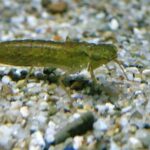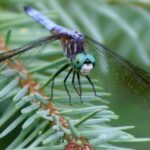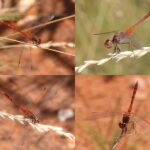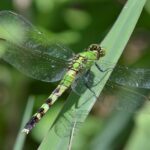The Common Green Darner: Habitat, Diet, and Life Cycle Unveiled:The common green darner dragonfly (Anax junius) is a striking insect, measuring approximately three inches in length, with a vibrant green thorax. Males and females can be differentiated by the coloration of their abdomens—males possess an intense blue abdomen, while females exhibit a reddish-brown hue. The immature forms, known as naiads, reside in ponds and streams, characterized by cylindrical bodies and elongated legs.
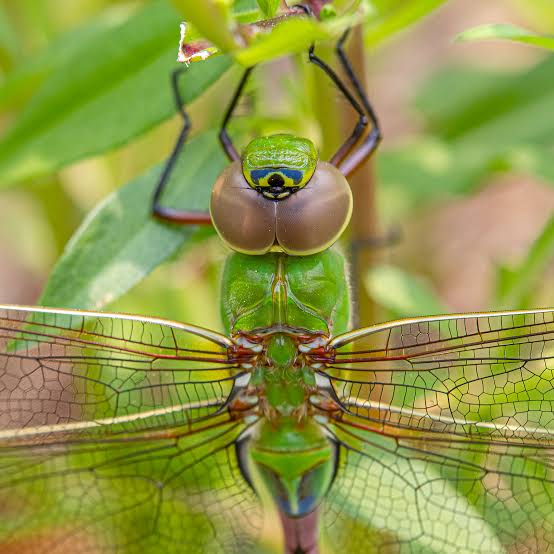
Dietary Habits
As proficient aerial predators, common green darners, like other dragonflies, feed on a wide array of flying insects, including flies, gnats, moths, butterflies, mayflies, damselflies, mosquitoes, and even smaller dragonflies. The aquatic naiads primarily consume small aquatic insects but will also prey upon tadpoles and small fish.
Habitat and Seasonal Presence
One of the most prevalent dragonfly species in North America, the common green darner can be spotted from the early days of spring well into late autumn, typically near ponds, marshes, and wetlands. These dragonflies are some of the first to emerge in the spring, signaling the transition to warmer weather.
Significance to Minnesotans
Much like the state insect, the monarch butterfly, the common green darner undertakes an annual migration across the continent. Departing Minnesota between July and October, they travel south, where they lay eggs and die. The subsequent generation then begins the northward journey in the spring. However, unlike monarchs, certain populations of green darners remain in Minnesota year-round. These non-migratory dragonflies overwinter as naiads in frozen ponds, emerging as adults once the weather warms in spring.
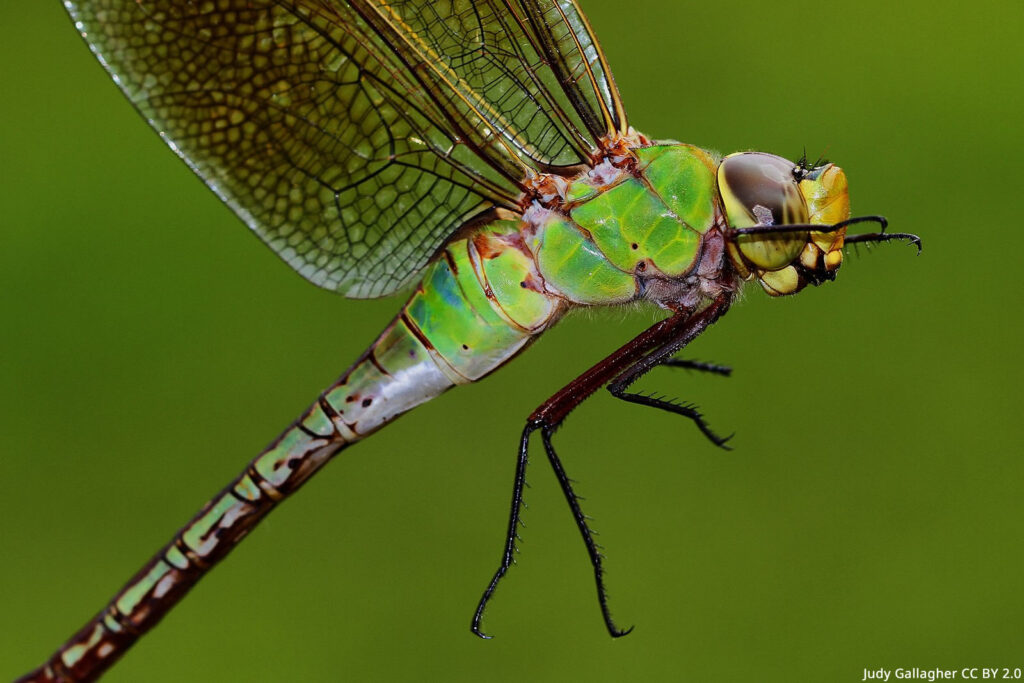
Fun Fact
The name Anax junius roughly translates to “Lord of June,” with Anax being a Greek term for a ruler or master. Common green darners, members of the Aeshnidae family, are often colloquially referred to as “devil’s darning needles,” “mosquito hawks,” or “horse stingers,” despite lacking stingers.
General Description
Large-eyed and robust, the common green darner (Anax junius) is a vividly colored dragonfly, easily recognized within the Aeshnidae family. Predominantly found in the Pacific Northwest and across much of North America, the adults possess long, sleek abdomens measuring 68–78 mm (2.6–3 inches) in length and a wingspan of 9–10 cm (3.5–4 inches). The striking greenish-olive head and solid green thorax serve as key identification features. The male’s abdomen is adorned with bright blue markings, contrasting with the more muted, brownish-orange abdomen of the female. Interestingly, the female’s coloration can sometimes closely resemble the male’s vibrant hue. The larvae, or naiads, are aquatic, wingless, and exhibit a streamlined form, with small wing pads developing through successive molts.
Dragonflies and damselflies belong to the insect order Odonata, named for the toothlike ridges on their jaws. While damselflies are generally smaller and more delicate, with wings that rest vertically when perched, dragonflies typically feature a more robust build.
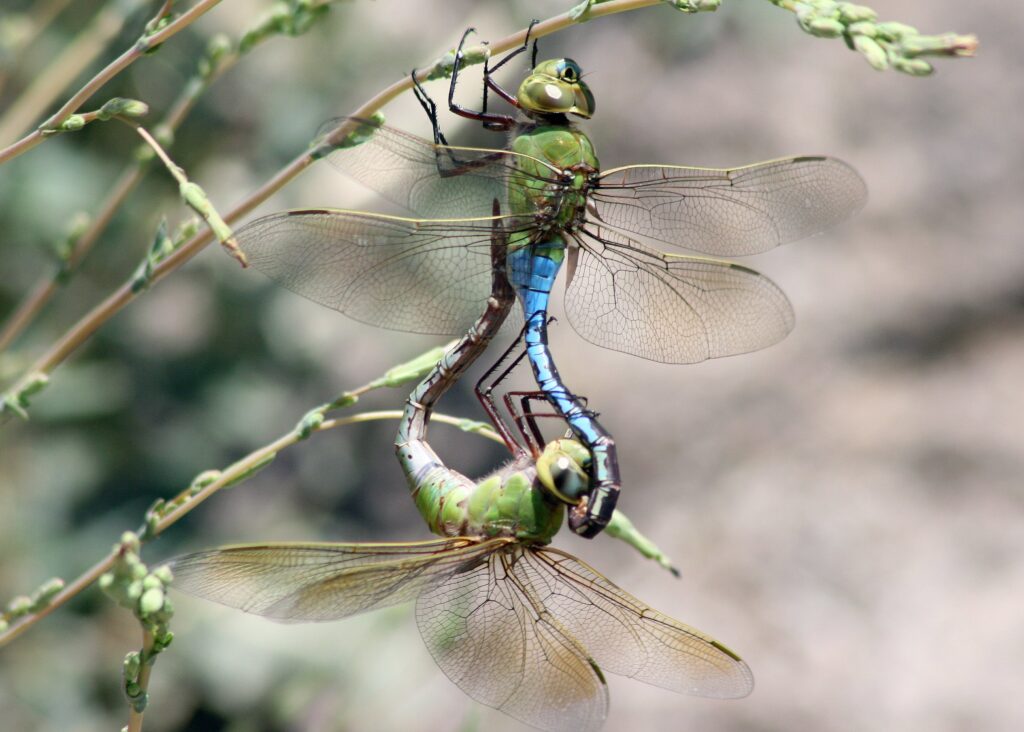
Habitat and Distribution
Water is essential for the reproduction of dragonflies. The common green darner thrives in warm, still waters such as lakes, ponds, marshes, and backwater areas of slow-moving streams across North America. While they predominantly inhabit these wetland environments during breeding season, non-breeding individuals may forage in drier areas or even venture outside of North America.
Behavior and Feeding Habits
Common green darners are “hawkers,” adept at snatching small flies, leafhoppers, beetles, and other diminutive odonates while flying rapidly over open water or along shorelines. When not in flight, they perch by hanging from vegetation with their long legs rather than resting upright.
The larvae, also formidable predators in their aquatic habitat, rely on a spring-loaded labium (a lower lip-like appendage) to seize prey and draw it toward their mandibles. Their unique method of respiration involves the expulsion of water through the rectum, facilitating a sudden and swift attack. Notably, some populations of common green darners exhibit migratory behavior, flying south along the Oregon coast in late September to October in swarms, creating a feeding frenzy for birds like purple martins, Swainson’s hawks, and merlins.
The dragonfly’s exceptional flight abilities are a marvel of nature. With each wing powered independently, they can hover effortlessly, move in any direction, and execute sharp maneuvers, which is instrumental both in hunting prey and evading predators such as birds, spiders, frogs, fish, and lizards.
Reproduction
During the summer months, males engage in rapid flights over wetland areas and shorelines in search of females. Mating occurs in the characteristic “mating wheel” position, where the male’s abdomen connects to the female’s head and the female’s reproductive organ is fertilized by sperm from the male. This coupling may persist for several minutes. Afterward, the female detaches from the male but remains in “tandem,” allowing the male to guard her from rival suitors. In this position, the female uses a sharp ovipositor to deposit her eggs into decaying plant matter submerged in the water.
The eggs hatch within a week into tiny aquatic larvae that will molt up to a dozen times as they grow. The final larval stage emerges from the water, breathes air, and attaches to vegetation, initiating metamorphosis. The adult dragonfly emerges from the exoskeleton, known as the exuvia, expanding its wings by pumping fluid into them. At this stage, the immature dragonfly, known as a teneral, is highly vulnerable to predation until its body fully hardens and its coloration becomes visible. Depending on climate and migratory patterns, the adult green darner’s lifespan ranges from a few weeks to a month.

